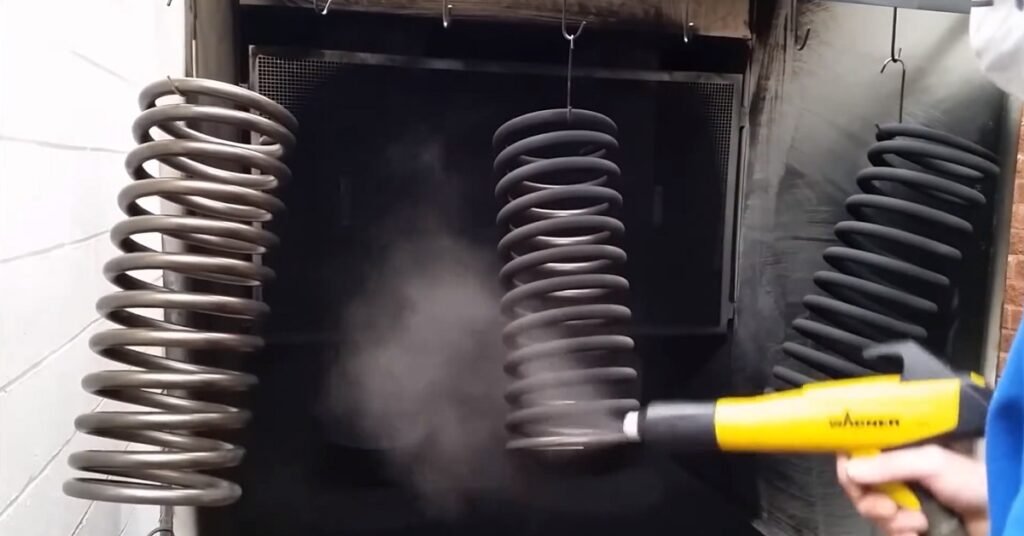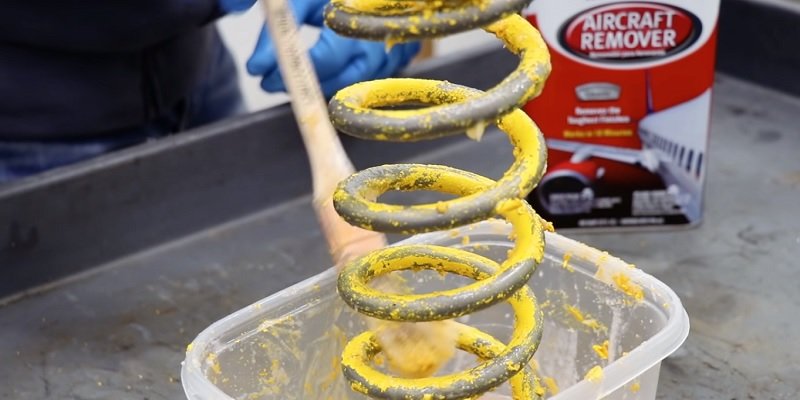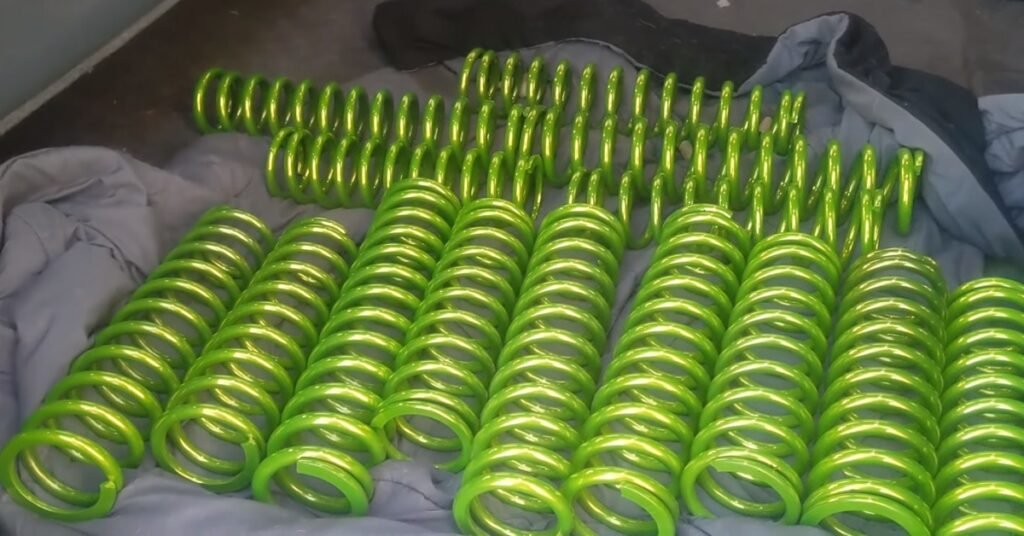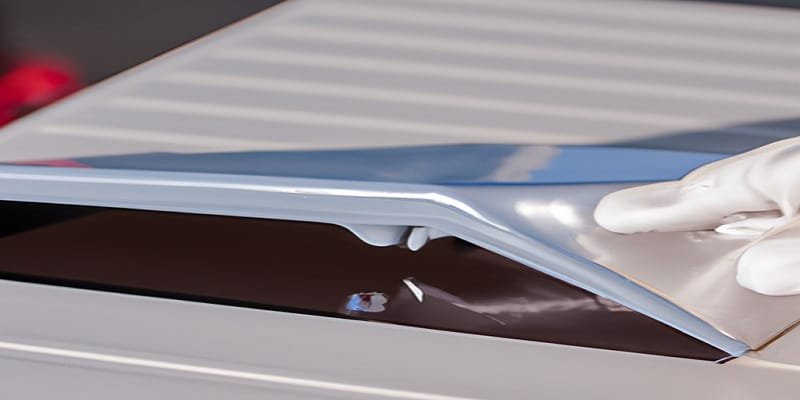Yes, you can powder coat coil springs. Powder coating is a popular method of applying a durable and protective finish to various metal surfaces, including coil springs.
By applying a powdered coating material and heating it to create a hardened finish, coil springs can be effectively protected against corrosion and damage, while also offering an opportunity to customize their appearance. This process is widely used in automotive, industrial, and manufacturing applications to enhance the performance and lifespan of coil springs.
Whether it’s for functional or aesthetic purposes, powder coating provides an efficient and effective solution for treating coil springs.

Understanding Powder Coating
Powder coating is a popular method of applying a durable and attractive finish to various metal surfaces, including coil springs. Unlike traditional liquid-based paint, powder coating involves applying an electrostatically charged powder to the surface and then curing it under heat to create a smooth and even coating.
What Is Powder Coating?
Powder coating is a dry finishing process that has gained popularity in recent years due to its numerous advantages over traditional wet paint. The powder used in this process is usually a mixture of finely ground particles of resin, pigment, and other additives. The powder is electrostatically charged and sprayed onto the coil springs, creating an adhesive layer that adheres to the surface. The coated springs are then heated in an oven where the powder melts and fuses into a robust and protective layer.
Read More About: What is powder coating and how does it work?
Benefits Of Powder Coating
Powder coating offers several benefits that make it an excellent choice for coating coil springs:
- Enhanced durability: Powder-coated coil springs are resistant to chipping, scratching, fading, and corrosion, ensuring a long-lasting finish.
- Uniform finish: Due to the electrostatic application process, powder coatings provide a smooth, even finish without any brush marks or drips.
- Color variety: Powder coatings are available in a wide range of colors and finishes, allowing for customization and creativity.
- Eco-friendly: Powder coatings are free from volatile organic compounds (VOCs) and hazardous air pollutants (HAPs), making them a more environmentally friendly option compared to liquid paints.
- Cost-effective: Powder coating is a cost-effective solution as it reduces the need for rework and touch-ups, leading to lower maintenance costs in the long run.
Why Choose Powder Coating For Coil Springs?
When it comes to coating coil springs, powder coating offers several advantages:
- durability and resistance to wear and tear, extending the lifespan of the springs.
- even application for a seamless finish, maintaining the aesthetic appeal of the springs.
- protection against corrosion, preventing damage due to moisture and exposure to the elements.
- ability to withstand challenging environments, ensuring reliable performance under various conditions.
- customization options to match the desired color and style preferences of the coil springs.
Overall, powder coating is a reliable and efficient method of enhancing the appearance and performance of coil springs, making them an ideal choice for various applications.
Considerations For Powder Coating Coil Springs
When it comes to enhancing the appearance and durability of coil springs, powder coating is a popular choice among automotive enthusiasts and manufacturers. Not only does it provide a sleek, uniform finish, but it also offers excellent resistance to rust and corrosion. However, before you embark on powder coating your coil springs, there are a few essential considerations to keep in mind.
In this article, we’ll delve into three key aspects that are crucial for achieving successful powder coating results on coil springs: material compatibility, preparing the springs for coating, and masking and protecting areas that should not be coated.
Coil Spring Material Compatibility

Before starting the powder coating process, it’s imperative to ensure that the material of the coil springs is compatible with powder coating. Typically, coil springs are made from a variety of metals, including steel, iron, and even aluminum in some cases.
Steel coil springs are most commonly used due to their strength and durability. When it comes to powder coating, steel and iron springs are ideal candidates because of their ability to withstand the high temperatures involved in the curing process.
On the other hand, aluminum coil springs might not be suitable for powder coating, as they tend to have a lower melting point compared to steel and iron. The extreme heat required during the powder coating process can potentially cause deformation or damage to aluminum springs. Hence, it’s crucial to verify the material composition of the coil springs before proceeding with powder coating.
Preparing Coil Springs For Powder Coating

Preparation is key to ensure a successful powder coating application. Properly preparing the coil springs involves a few essential steps:
- Start by removing any existing coatings, dirt, grease, or rust present on the surface of the springs. This can be done using solvents or a wire brush.
- Next, thoroughly clean the coil springs with a degreaser to eliminate any remaining contaminants that may interfere with the adhesion of the powder coat.
- Inspect the coil springs for any imperfections or damage. If necessary, perform repairs or replacements before proceeding with powder coating.
- After the springs are clean and in good condition, it’s crucial to preheat them. Preheating helps to remove any moisture and residual solvents that might be trapped within the springs, ensuring a smooth and even powder coat application.
Masking And Protecting Areas That Should Not Be Coated
When powder coating coil springs, it’s vital to pay attention to areas that should not be coated. These areas may include the end coils, where the spring is placed onto the suspension components, or specific sections that require precise fitment. To protect these areas from unwanted coating, masking techniques are employed:
- Apply high-temperature tape to cover the sections that should not be coated. This ensures that the powder coat only adheres to the intended areas.
- Additionally, silicone plugs can be used to protect the center hole or other critical areas that need to remain uncoated.
- Masking off the desired section requires precision and attention to detail, as any gaps or errors in the masking process can lead to a subpar finished product.
By following these considerations for powder coating coil springs – assessing material compatibility, preparing the springs adequately, and using masking techniques – you’ll be well-equipped to achieve superb results. Whether you need to enhance the appearance of your vehicle or improve the durability of your coil springs, powder coating can be an excellent choice, providing long-lasting protection and a flawless finish.
The Powder Coating Process For Coil Springs
The powder coating process for coil springs involves several steps to ensure a durable and attractive finish. From surface preparation to curing and finishing, each stage plays a crucial role in achieving high-quality powder coated coil springs. In this section, we will take a closer look at each step of the process.
Surface Preparation For Coil Spring Powder Coating
Before powder coating, proper surface preparation is essential to ensure good adhesion and eliminate any contaminants that may interfere with the coating process. Here is an overview of the surface preparation steps:
Thorough cleaning: The coil springs are thoroughly cleaned using a degreasing agent to remove dirt, oil, and other foreign substances.
Removal of rust and corrosion: If there are any signs of rust or corrosion on the coil springs, they are carefully treated and removed to create a clean surface.
Masking: Certain parts of the coil springs that should not be coated, such as mounting surfaces or end hooks, are masked off to protect them during the coating process.
Sanding or blasting: To improve the adhesion of the powder coating, the surface of the coil springs may be lightly sanded or blasted to create a rough texture.
Electrostatic Application Of Powder Coating
Once the coil springs are properly prepared, the powder coating is applied using an electrostatic method. This ensures an even and consistent coating. Here’s how the electrostatic application process works:
Charging the powder: The powder coating material is charged with an electrostatic charge, giving it a positive charge.
Coating application: The charged powder is then sprayed onto the coil springs, creating a cloud of charged particles that are attracted to the grounded metal surfaces.
Uniform coating: As the powder particles land on the coil springs, they adhere to the surface, forming a uniform and thick coating layer.
Curing And Finishing Of Powder Coated Coil Springs
Once the powder coating is applied, the coil springs need to be cured to ensure optimum durability and finish. The curing process involves the following steps:
Heat curing: The coil springs are placed in an oven and heated to a specific temperature, usually between 350°F to 400°F, depending on the type of powder coating used.
Curing time: The coil springs are held at the curing temperature for a predetermined time, typically ranging from 10 to 30 minutes, allowing the coating to melt, flow, and cure.
Cooling: After the curing process, the coil springs are allowed to cool down gradually to room temperature before further handling.
Finishing touches: Once cooled, the powder coated coil springs may undergo additional finishing touches, such as inspection, packaging, or any necessary touch-ups to ensure a flawless end product.
The powder coating process for coil springs transforms them into durable, corrosion-resistant, and visually appealing components. By following the surface preparation, electrostatic application, and curing steps, you can achieve outstanding results in powder coated coil springs that meet your specific requirements.
Advantages And Limitations Of Powder Coating Coil Springs
Durability And Resistance To Corrosion
Powder coating offers numerous advantages when it comes to enhancing the durability and corrosion resistance of coil springs. When the electrical charge is applied to the powder coating material, it adheres tightly to the metal surface, forming a thick protective layer. This layer acts as a barrier, shielding the coil springs against damage from moisture, chemicals, and everyday wear and tear.
| Advantages | Limitations |
|---|---|
|
|
Powder Coating Color Options And Customization
Powder coating offers a wide range of color options, allowing for customization of coil springs to match a specific desired aesthetic. Whether you are looking for a vibrant and eye-catching color or a more subtle and understated tone, powder coating provides the flexibility to meet your preferences. Additionally, various finishes such as metallic, glossy, or textured can be achieved through powder coating.
Potential Challenges Or Limitations Of Powder Coating Coil Springs
While powder coating offers several advantages, there are a few potential challenges or limitations to consider. Firstly, the process of powder coating may alter the spring rate and affect the performance of the coil springs. It is important to carefully evaluate and test the springs before and after powder coating to ensure desired performance is maintained.
Moreover, for effective powder coating application, proper surface preparation is crucial. Complex designs may require additional preparation work such as sandblasting to ensure optimal adhesion of the powder coating material. However, this extra step can increase time and cost.
In conclusion, despite these potential challenges and limitations, powder coating offers significant advantages in terms of durability, resistance to corrosion, and customization options for coil springs.
Best Practices For Powder Coating Coil Springs

Coil springs play a crucial role in the suspension system of vehicles, providing stability, support, and a smooth ride. To enhance their durability and aesthetics, powder coating is commonly used. But what are the best practices for powder coating coil springs? When powder coating coil springs, including choosing the right equipment and materials, ensuring proper curing and adhesion, and maintaining the powder coating for long-lasting performance.
Choosing The Right Powder Coating Equipment And Materials
When it comes to powder coating coil springs, selecting the appropriate equipment and materials is paramount. Here are some factors to consider:
- Equipment: Use a spray booth or dedicated powder coating system to ensure optimal application. These setups help control the environmental conditions, such as temperature and humidity, allowing for consistent and even coating.
- Preparation: Properly clean the coil springs to remove any dirt, oil, or rust using a degreaser or solvent. This step ensures better adhesion of the powder coating.
- Masking: Use masking tape or plugs to protect areas that should not be coated, such as the ends or mounting points of the coil springs.
- Material Selection: Choose the right powder coating formula for coil springs, considering factors like durability, color options, and resistance to corrosion and UV radiation.
Ensuring Proper Curing And Adhesion Of Powder Coating
Proper curing and adhesion are critical for achieving a durable and smooth powder coating finish. Follow these tips:
- Curing: After applying the powder coating, ensure the coil springs are cured at the recommended temperature and duration specified by the powder manufacturer. This step allows the powder coating to fully melt and bond to the surface, ensuring maximum adhesion.
- Temperature Control: Maintain a consistent temperature throughout the curing process to prevent under-curing or over-curing, which can lead to adhesion issues or compromised finish quality.
- Preheating: Preheating the coil springs before coating can help reduce the risk of condensation, which can negatively impact adhesion. However, take care not to overheat the springs to avoid affecting their structural integrity.
- Surface Preparation: Ensure the coil springs are properly cleaned and free of contaminants. Surface irregularities, such as pits or rough spots, can affect adhesion, so sandblasting or other surface preparation methods may be necessary.
- Proper Coating Application: Achieve an even and consistent application of the powder coating by using appropriate techniques such as electrostatic spray or fluidized bed coating.
Maintaining And Preserving Powder Coated Coil Springs
Once the coil springs are powder coated, proper maintenance and care are vital to preserve the finish and longevity of the coating. Consider the following:
- Clean Regularly: Remove dirt, grime, and road debris from the coil springs regularly to prevent buildup and potential damage to the powder coating. Use a mild detergent or non-abrasive cleaner and a soft brush or cloth.
- Inspect for Damage: Periodically inspect the powder coating for any signs of chipping, cracking, or peeling. Address these issues promptly to prevent corrosion and maintain the appearance of the coil springs.
- Avoid Harsh Chemicals: Avoid using harsh chemicals or solvents on the powder-coated surface, as they can cause damage or discoloration. Stick to mild cleaners and follow the manufacturer’s recommendations for maintenance.
- Protective Coatings: Consider applying a clear protective coating over the powder coating to provide an additional layer of defense against UV radiation, chemical exposure, and abrasion.
- Store Properly: If the coil springs are not immediately installed, store them in a clean and dry environment, away from moisture and corrosive substances.
Frequently Asked Questions For Can You Powder Coat Coil Springs?
How Much Does It Cost To Powder coat Coil Springs?
The cost of powder coating coil springs varies, but typically ranges from $50 to $100 per spring. Prices may be influenced by factors such as size, complexity, and desired finish. It’s best to contact a professional powder coating service for an accurate quote.
Does Powder Coating Weaken Springs?
No, powder coating does not weaken springs. The coating process actually strengthens springs, providing additional protection against corrosion and extending their lifespan.
Is It Ok To Powder Coat Leaf Springs?
Powder coating leaf springs is generally acceptable as it offers durability, corrosion resistance, and a clean finish. However, it is essential to ensure that the leaf springs are properly prepared and cleaned before powder coating to ensure a successful application.
Can You Powder Coat Strut Springs?
Yes, you can powder coat strut springs. Powder coating provides a durable and attractive finish that can protect the springs from corrosion and wear. It is a popular choice for enhancing the appearance and longevity of strut springs.
Final Thoughts
Powder coating coil springs is a viable option to enhance both their appearance and durability. By applying a powdery substance and oven-curing it, the springs receive a protective and attractive finish. This process allows for customization and cost-effectiveness while maintaining the springs’ functionality.
So, if you want to give your coil springs a new lease on life, powder coating is definitely worth considering.


